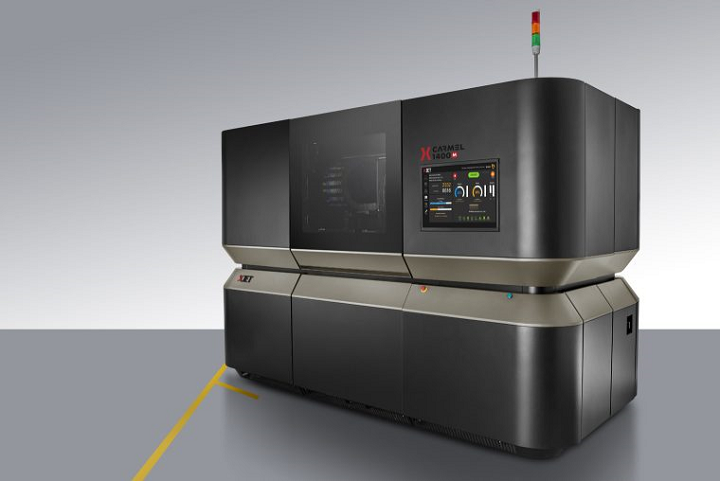XJet Sets Sights on Metal 3D Printing IPO
XJet, a 3D printing manufacturer based in Rehovot, Israel, plans to raise up to $10 million through an initial public offering (IPO) on the Nasdaq. According to a registration statement filed with the Securities and Exchange Commission (SEC) on May 25, 2023, the company intends to offer two million shares at a price range of $4 to $6. The ticker symbol sought for trading is “XJET,” and the net proceeds from the IPO will be allocated toward operating expenses, working capital, and capital expenditures. XJet also states that it may utilize a portion of the funds for acquisitions, investments, or to support other business ventures.
While the exact date of the IPO remains unknown, the timeline for a foreign company to become public after filing the F-1/A form with the SEC can vary significantly based on various factors. Typically, the SEC has a 20-day review and comment period for registration statements, which can be extended if further information is required. Looking back, the completion of the IPO process is also influenced by market conditions, investor demand, and other variables. XJet commenced its documentation filing with the SEC in mid-April, indicating that if the registration statement receives approval, the company could proceed with listing in a matter of weeks.
As part of the IPO approval process, XJet disclosed its recent financial information. In 2022, the company reported total revenue of $6.03 million, representing a substantial 77% increase compared to 2021. However, XJet incurred net losses of $23.2 million in 2021 and $17.6 million in 2022 and a negative adjusted EBITDA (earnings before interest, taxes, depreciation, and amortization) in both years, as outlined in the disclosed document.
3D printing potential
Known for its innovative approach to metal and ceramic 3D printing, XJet developed a patented technology called NanoParticle Jetting (NPJ), producing highly detailed and complex metal and ceramic parts with exceptional precision. By using metal or ceramic nanoparticles suspended in liquid, the method helps create highly detailed parts layer by layer. As a result, it enables the production at scale of geometrically complex and high-quality metal and ceramic end-use parts that are otherwise difficult or impossible to produce.
XJet’s NPJ process supports a wide range of materials, allowing for the creation of functional parts with various material properties. In addition, the technology’s soluble support structures reduce waste and simplify post-processing. With industry recognition and strategic partnerships, XJet has established itself as a leading innovator in the 3D printing field, catering to industries such as aerospace, automotive, and healthcare. From Youngstown Business Incubator to Stratasys (Nasdaq: SSYS) and Autodesk (Nasdaq: ADSK), XJet has formed several strategic partnerships and collaborations with leading organizations and industry players.
 Straumann will go from developing product concepts with its XJet Carmel AM System to producing end-use parts. Image courtesy of XJet.
Straumann will go from developing product concepts with its XJet Carmel AM System to producing end-use parts. Image courtesy of XJet.With 93 employees and headquarters in both Israel and Hanover, New Hampshire, the business has been experiencing steady growth in recent years. It expanded its product line, launching a new metal 3D printing system in 2020 called the Carmel 1400M, expanded operations with new offices in Japan and Italy, and also launched a new ceramic 3D printing material. In addition, XJet has received multiple awards for its innovative technology, including the prestigious 2021 Frost & Sullivan Global Technology Innovation Award for Metal Additive Manufacturing. These achievements further solidify XJet’s position as a leader in the 3D printing industry as it prepares for an IPO.
Competitor Overview
While some companies have experienced significant growth after going public, others have struggled to maintain their initial valuations. For example, Stratasys and 3D Systems (NYSE: DDD), two of the largest players in the industry, saw their stocks soar after their IPOs, but they also experienced a significant decline in stock prices in the years following their public offerings.
Not all 3D printing companies have been successful after their IPOs. For example, fast Radius filed for bankruptcy in 2022, citing a lack of demand and competition. In addition, ExOne, which went public in 2013, struggled with declining revenue before being acquired by Desktop Metal in 2021. Another example is voxeljet (Nasdaq: VJET), which went public in 2013 but has also struggled with declining revenue and has had to implement cost-cutting measures.
Ultimately, the success of XJet after its IPO will depend on many factors, including the market demand for its product, competition, and the company’s ability to innovate and adapt to the challenges that most 3D printing businesses face today.
Subscribe to Our Email Newsletter
Stay up-to-date on all the latest news from the 3D printing industry and receive information and offers from third party vendors.
Print Services
You May Also Like
New Business: Temporary, Migratory, & Modular 3D Printed Architecture
If we look at potentially emerging 3D printing businesses, then architecture has not been fully explored. Yes, there is a lot of house 3D printing going on worldwide. From deployable...
3D Printing News Briefs, April 19, 2025: Material Extrusion Standard, Metal Powder, & More
In today’s 3D Printing News Briefs, we’re covering a proposed standard for material extrusion, before moving on to business and metal powder. We’ll end with a commercial store’s robotic 3D...
Japan Unveils World’s First 3D Printed Train Station
Japan is now home to what we believe is the world’s first train station built with 3D printing technology. Located in Arida City, just south of Osaka, the new Hatsushima...
restor3d Raises $38M to Expand 3D Printed Orthopedic Implants
Backed by $38 million in new funding, restor3d is pushing ahead with the launch of four personalized implant lines, set to roll out in 2025 and 2026. This latest venture...

























